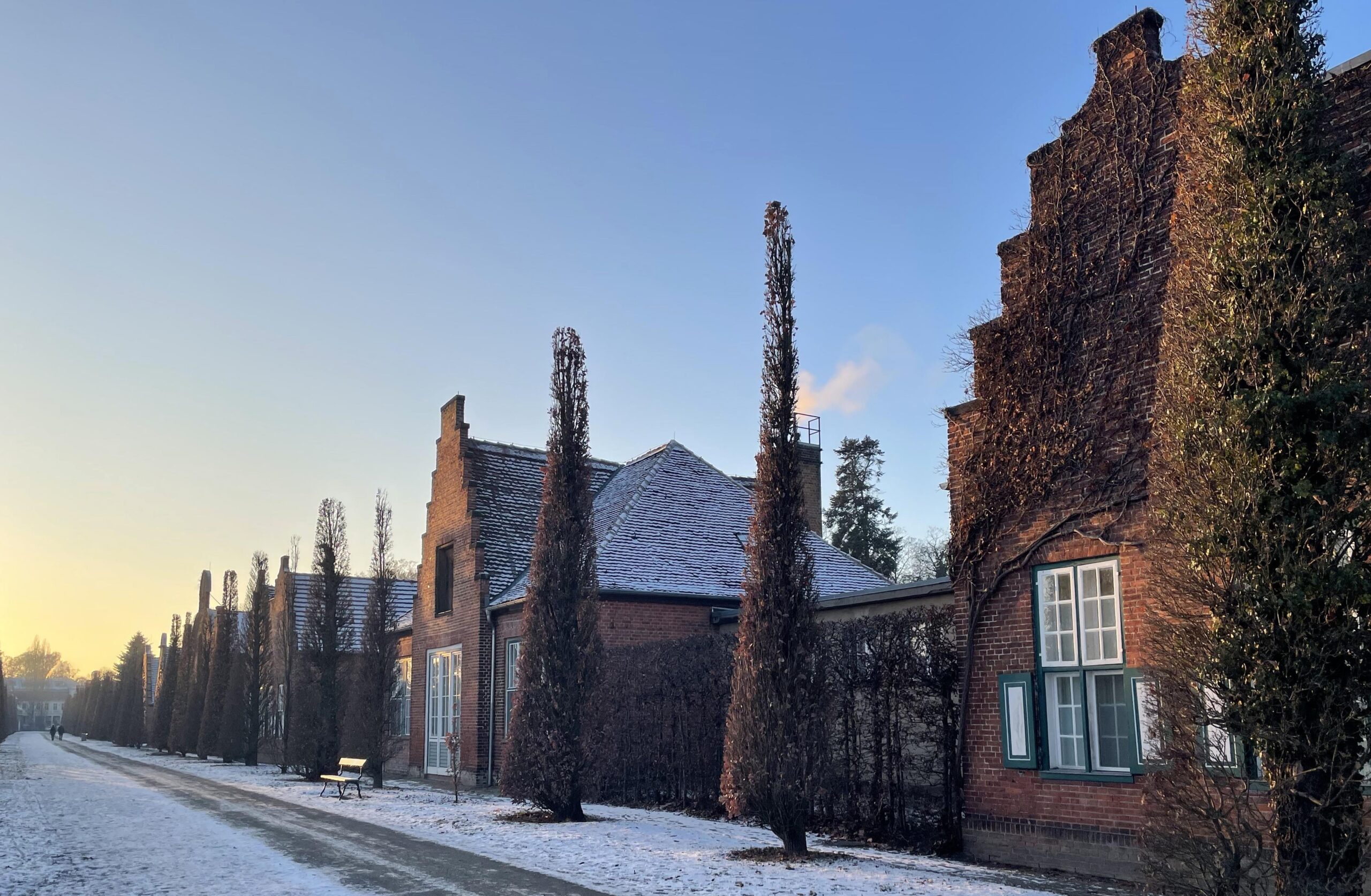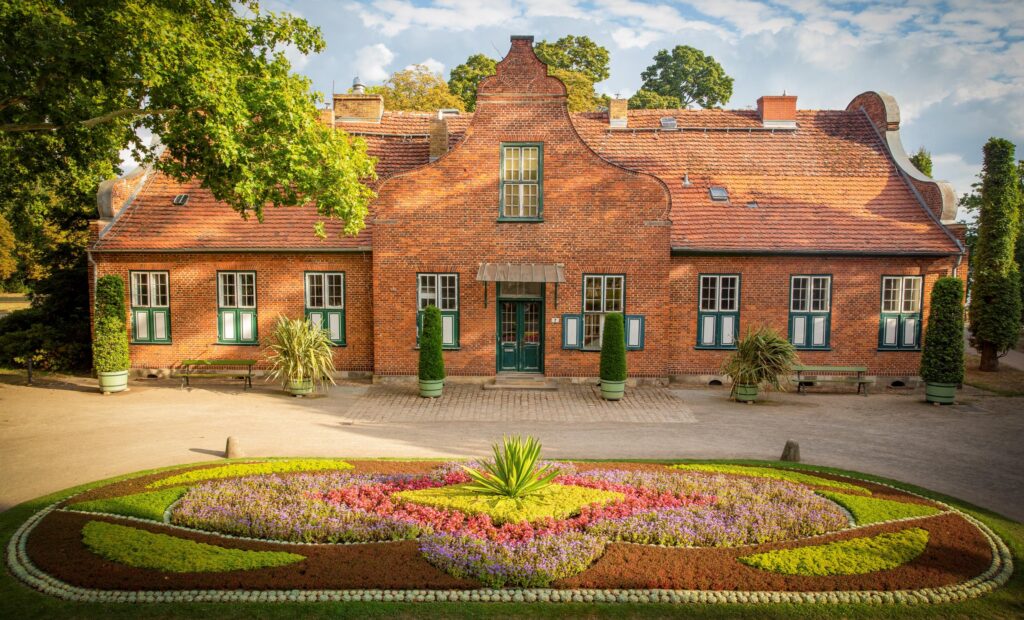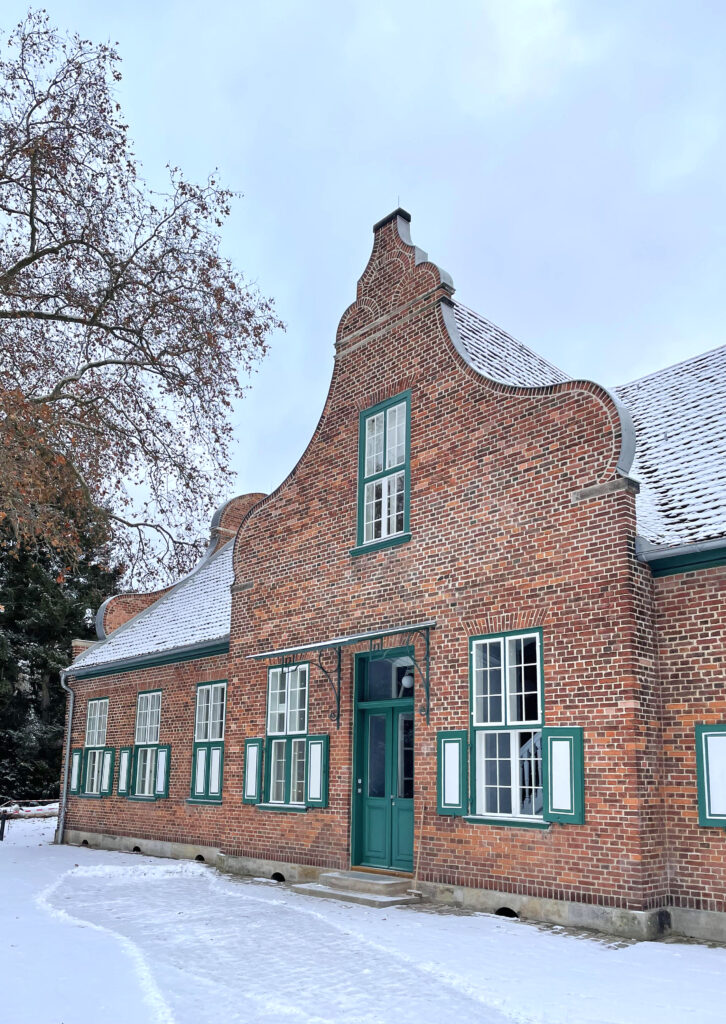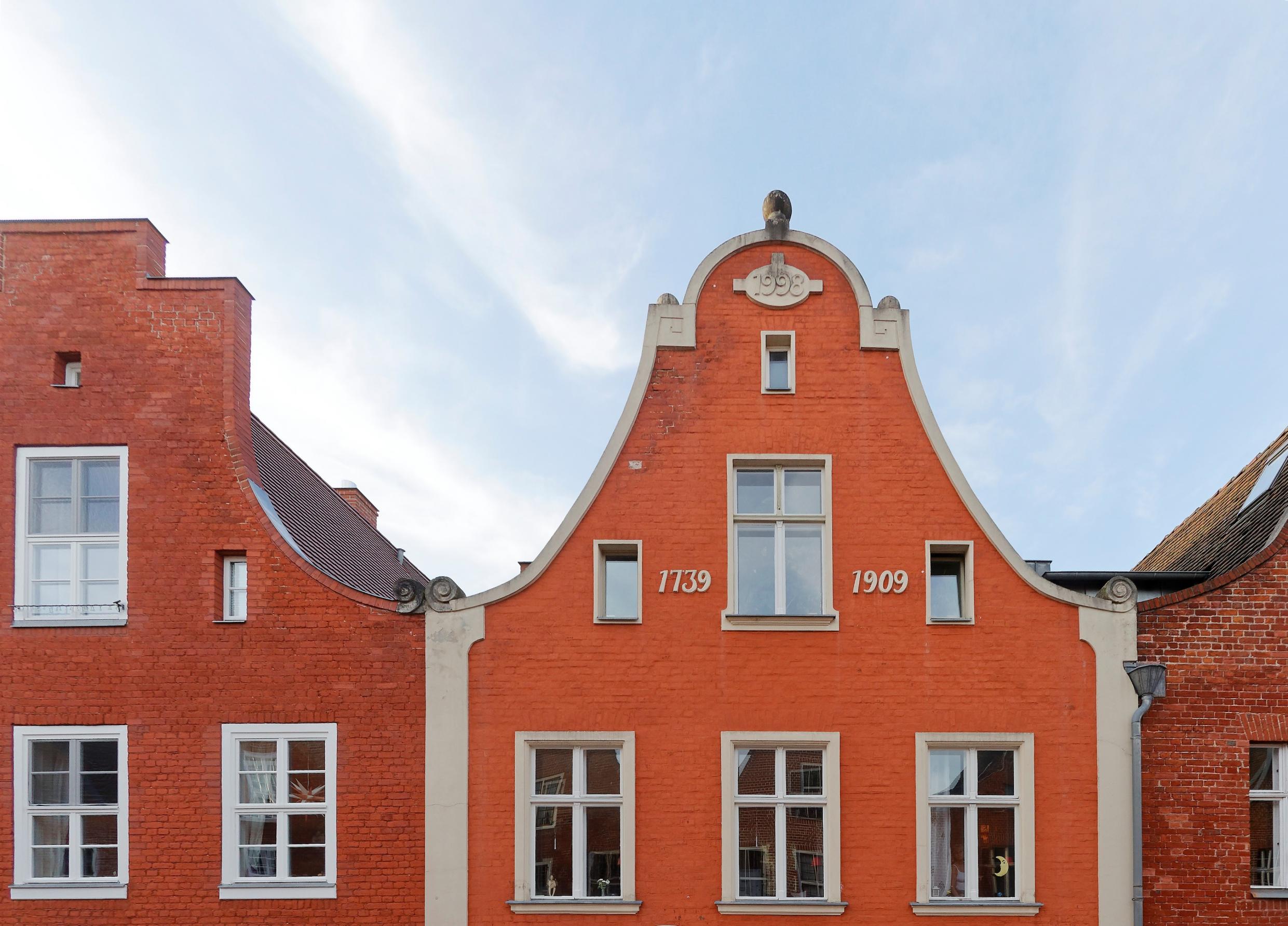
The Dutch Establishment in the New Garden
In King Frederick William II’s New Garden, at the Marble Palace, red brick outbuildings known as the “Dutch Establishment” were built that sported gables with bells and stepped gables. Belonging to this ensemble were the gatekeeper’s house with its four gate pavilions for the watchmen at the entrance to the park, and behind this, four caretaker or service houses for the carriage and court personnel, as well as horse stables and a carriage house along the main avenue.

It concluded with the House of the Cavaliers and Ladies for the noble entourage or high-ranking guests, which is distinguished by its four “Dutch” gables with bells. Next to this stood the Orange House (Oranjehuis), with a field of tulips planted in the area. Originally, the village grounds were to have been completed with a church tower, but this was never realized. Artificial villages were not a rarity in early landscape gardens. Mostly they functioned as picturesque backdrops for courtly garden festivities. One famous example is the Hamlet of the Queen, the so-called „Hameau de la Reine“ in Versailles. There was also a Dutch “pleasure garden place” of this type near the tsar’s residence Peterhof. In Potsdam, however, the establishment fulfilled more practical requirements. Accordingly, such an alignment of brick gables along the main avenue is reminiscent of a row of lackeys.
Construction of the Dutch Establishment began in 1789. This was the year that the visit took place to Berlin and Potsdam by the Hereditary Stadtholder Wilhelmine of Prussia and her son Willem (later King William/Willem I of the Netherlands). This hereditary stadtholder was a sister of Frederick William II. Her uncle, King Frederick II, had married her to William/Willem V of Orange. Her visit to Berlin in 1789 was meant to strengthen the Prussian-Dutch alliance following the victory of the Prussian troops over the anti-Orange “patriots”. After having been driven out by the “patriots”, the return of the hereditary princely couple to The Hague was celebrated in Berlin with military parades and court festivities. Most importantly, a lasting monument was to be created to the success of the Prussian troops in the Netherlands with the building of the Brandenburg Gate. The Prussian-Dutch Alliance was ultimately sealed with the engagement of Hereditary Prince William/Willem of Orange to Princess Friederike Luise Wilhelmine of Prussia (later the first Queen of the Netherlands). By the time of her wedding in Berlin in 1791, the Dutch Establishment in the Potsdam New Garden was ready for occupancy.

The most illustrious occupant of the establishment was Wilhelmine Countess of Lichtenau, who had earlier on been the mistress of Frederick William II. As a close confidante of the king, she spent the summer months here from 1791 to 1797 at the House of Cavaliers and Ladies with her children in the vicinity of the king. After the death of the king, it was quiet at the New Garden for many decades. This changed when in 1881 and 1905 the imperial crown prince families moved into the Marble Palace as their summer residence, and the personnel of the crown prince’s office of the major domo moved into the Dutch Establishment. In order to house the growing court household, it was necessary to extend and convert all of the attic floors and auxiliary buildings. Next to the old horse stables, a large riding hall was built, as well as modern garages for the crown prince’s automobiles.
After the monarchy ended in 1918, the ex-crown prince family remained at Cecilienhof and some of their servants remained at the Dutch Establishment. Her earlier lady-in-waiting, the Countess Keller, followed the empress to her Dutch exile in Doorn. She soon returned from there to her old domicile in the Dutch Establishment in 1921 in order to spend the rest of her days in the House of the Ladies. After the occupation of the New Garden by the Red Army in 1945, the commandants of the Soviet “Culture Park” moved into the caretaker residences of the establishment at the New Garden, which was used as an amusement park for members of the military from 1945 until 1952. At the time, hanging above the ticket office at the gatekeeper’s house was a huge poster that flaunted a picture of the Kremlin; along both sides of the main avenue, gigantic propaganda signs glorified the victorious Soviet Army. When the Culture Park was dissolved, all of the interventions and additions disappeared that had stemmed from that time. Beginning in 1968, the riding hall housed the Potsdam Planetarium, which then moved to the city’s Dutch Quarter in 2007. Today only renters and staff members of the Prussian Palaces and Gardens Foundation Berlin-Brandenburg live and work here at the Dutch Establishment.
– Stefan Gehlen, Stiftung Preußische Schlösser und Gärten



